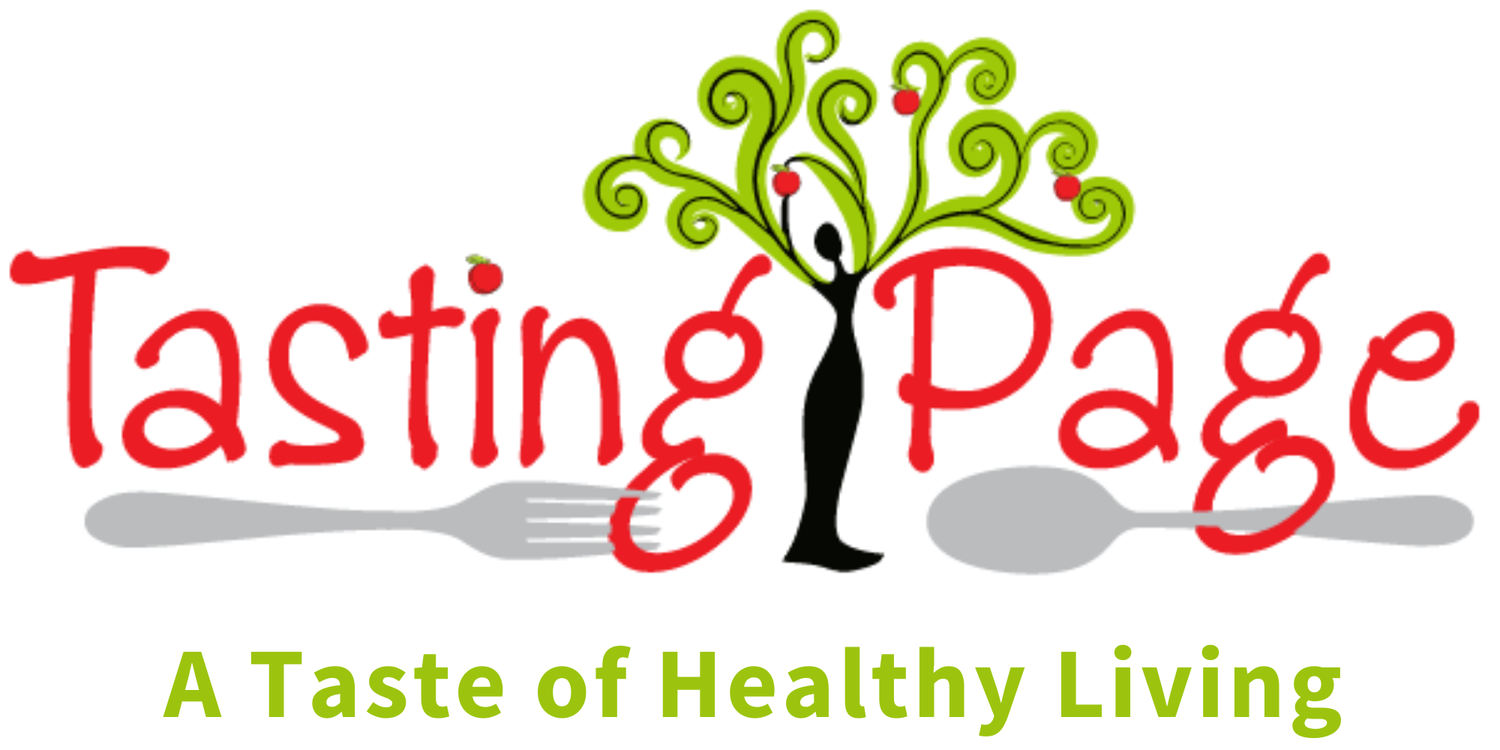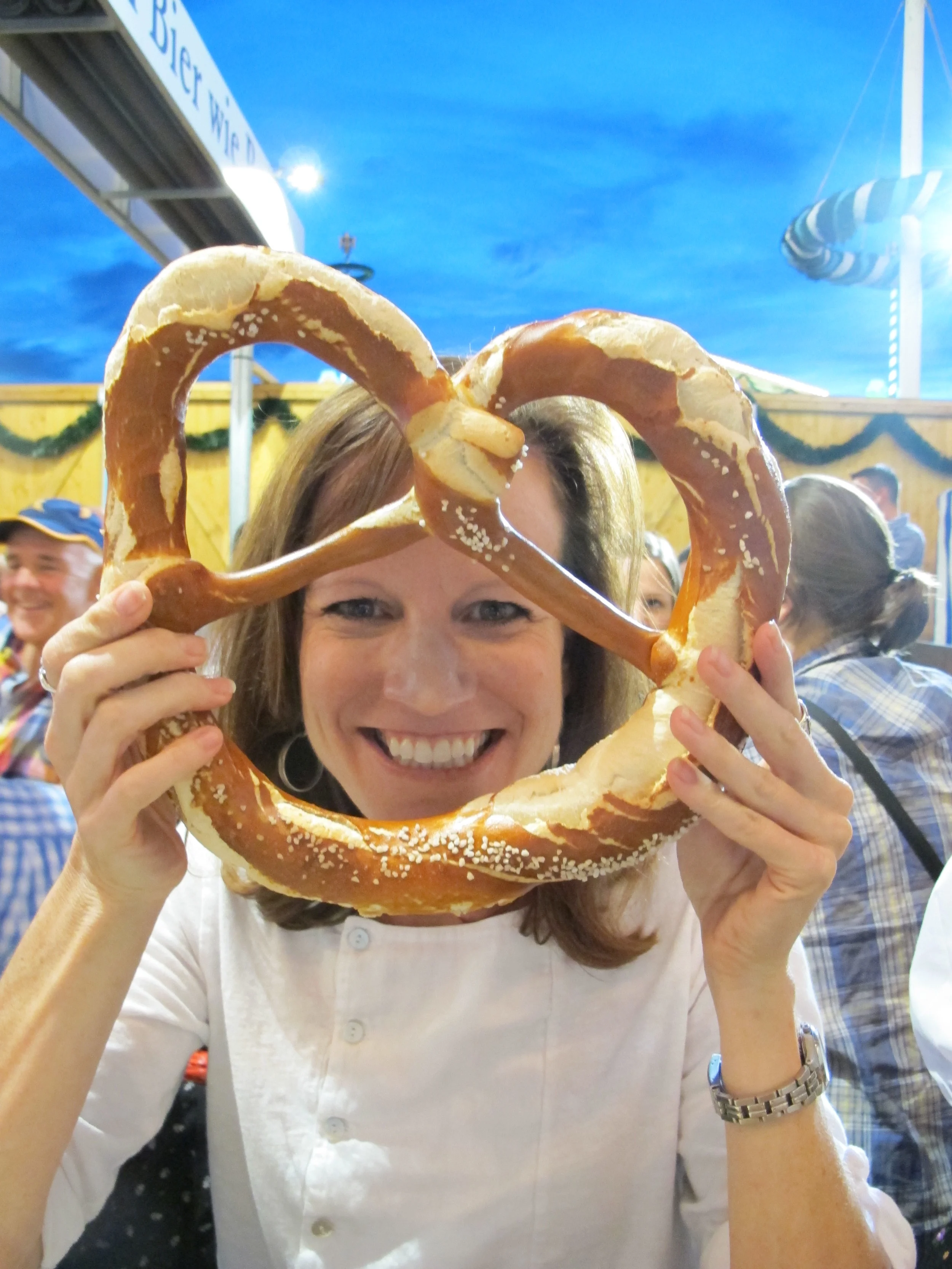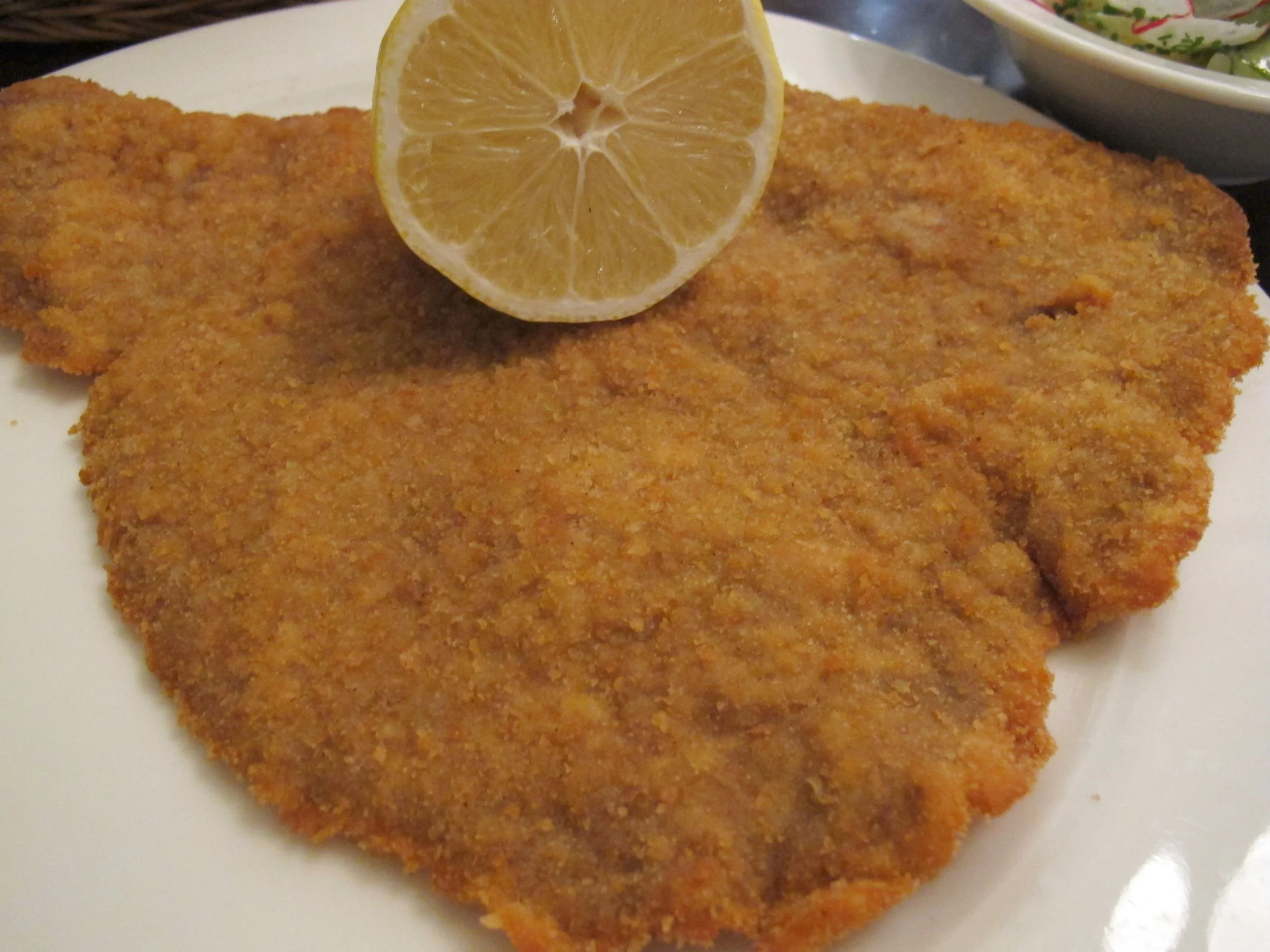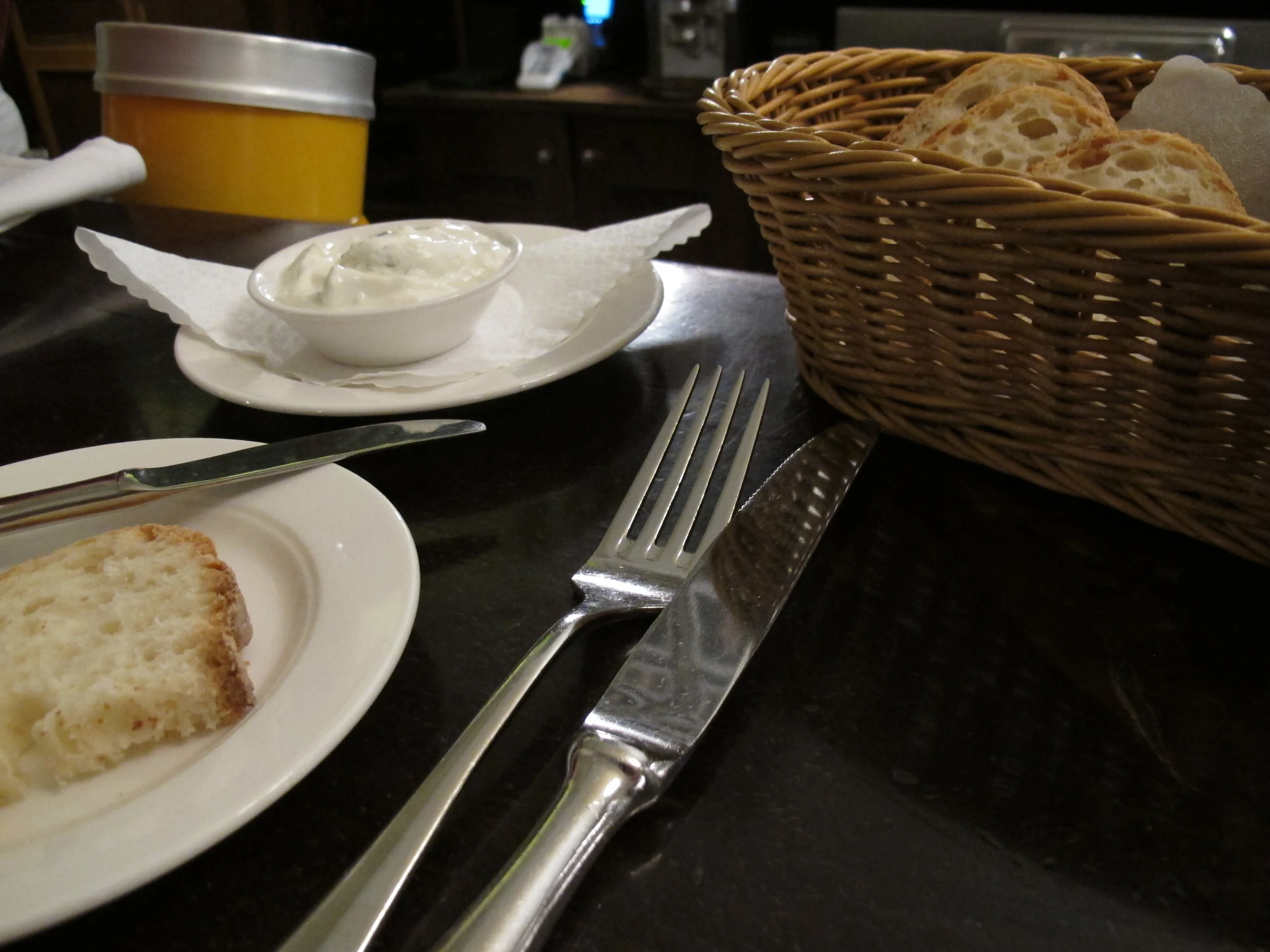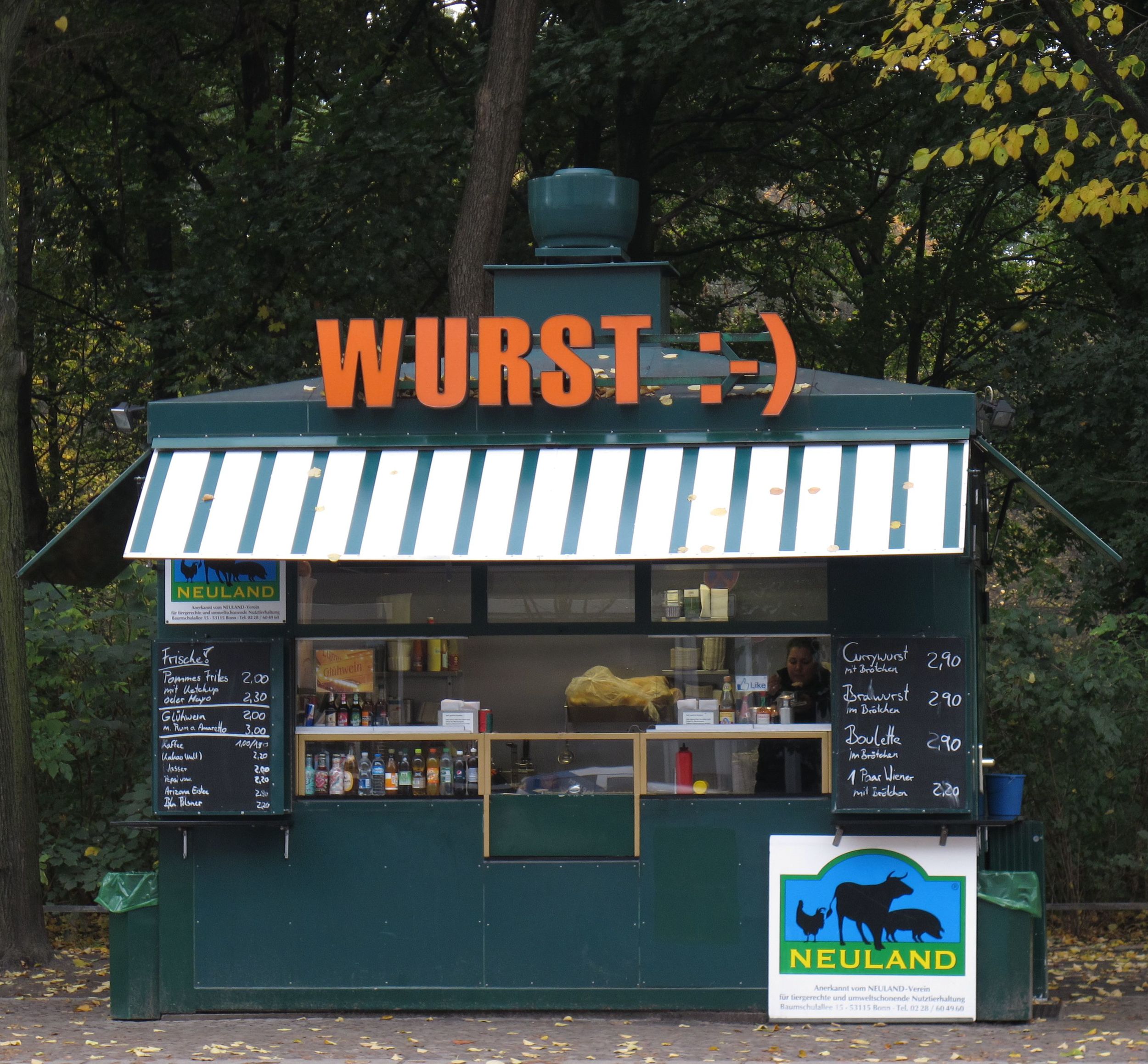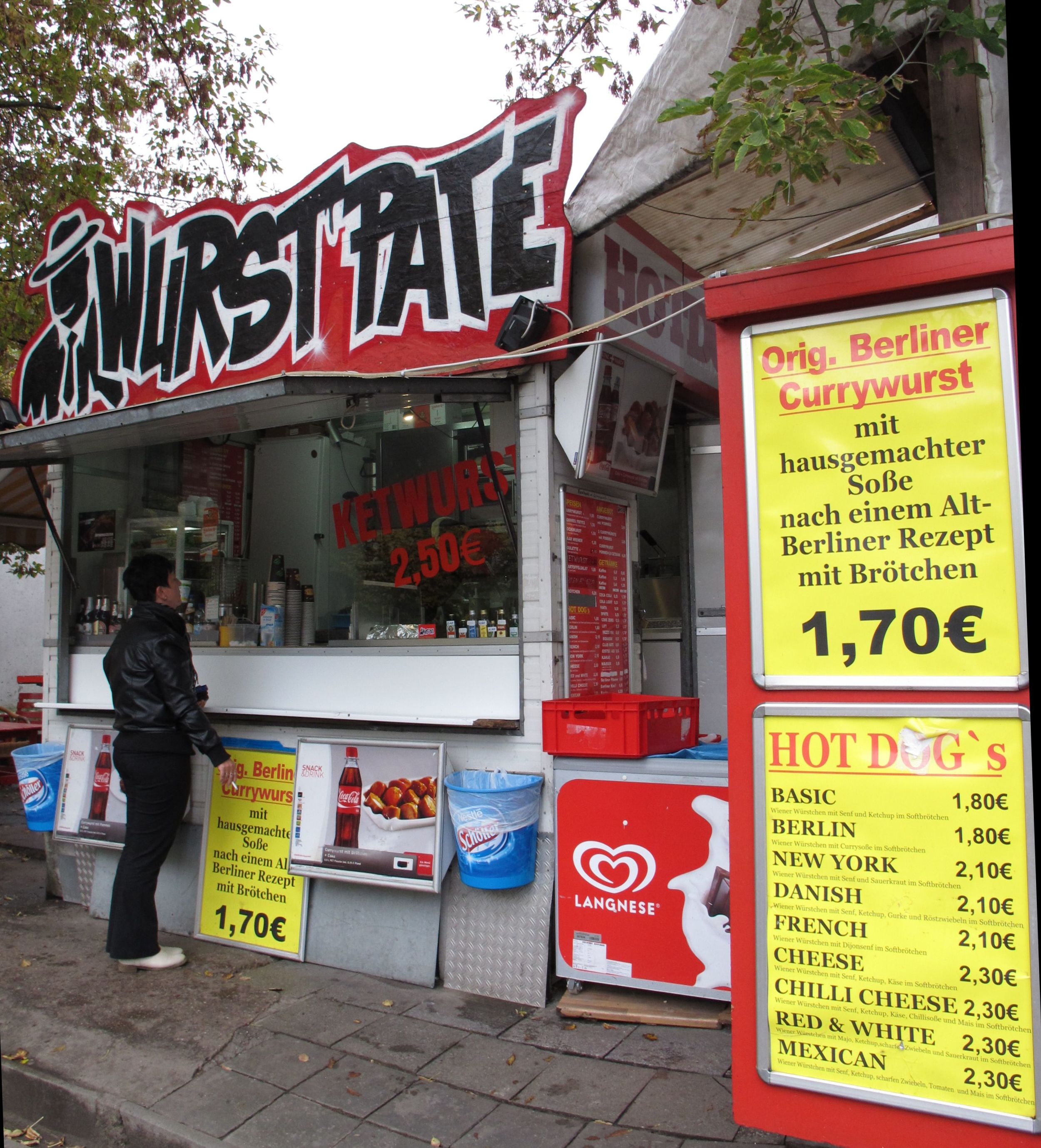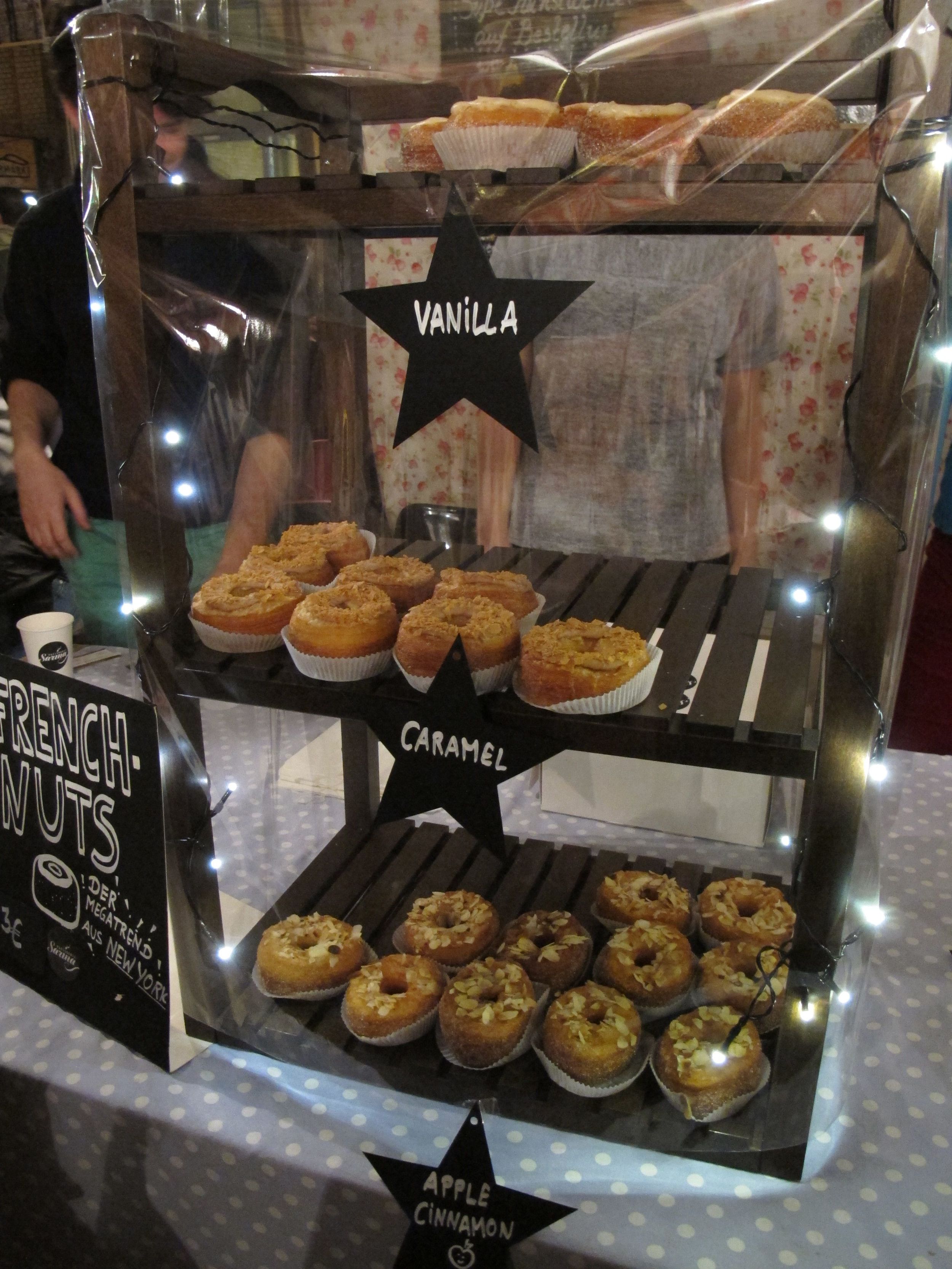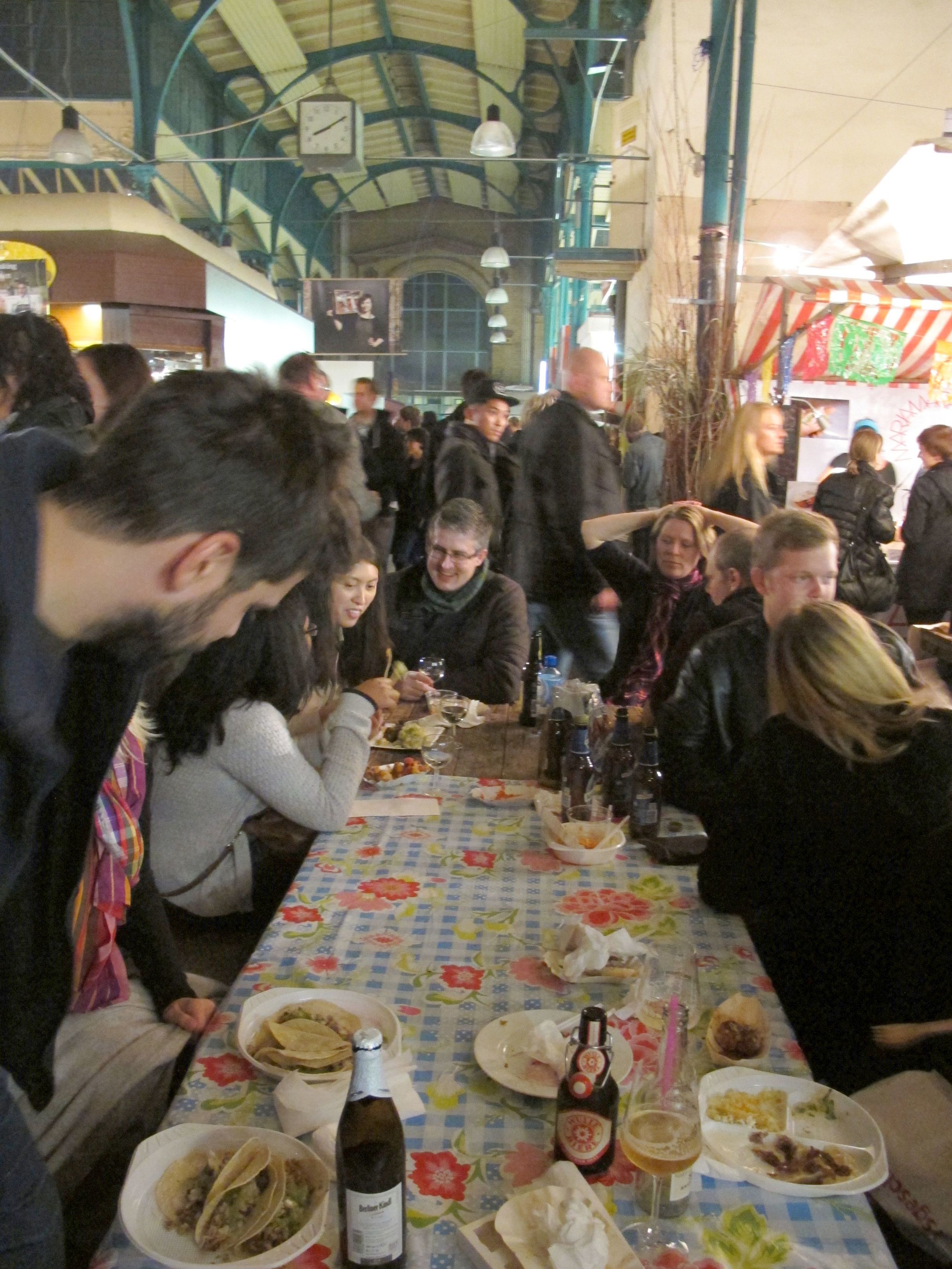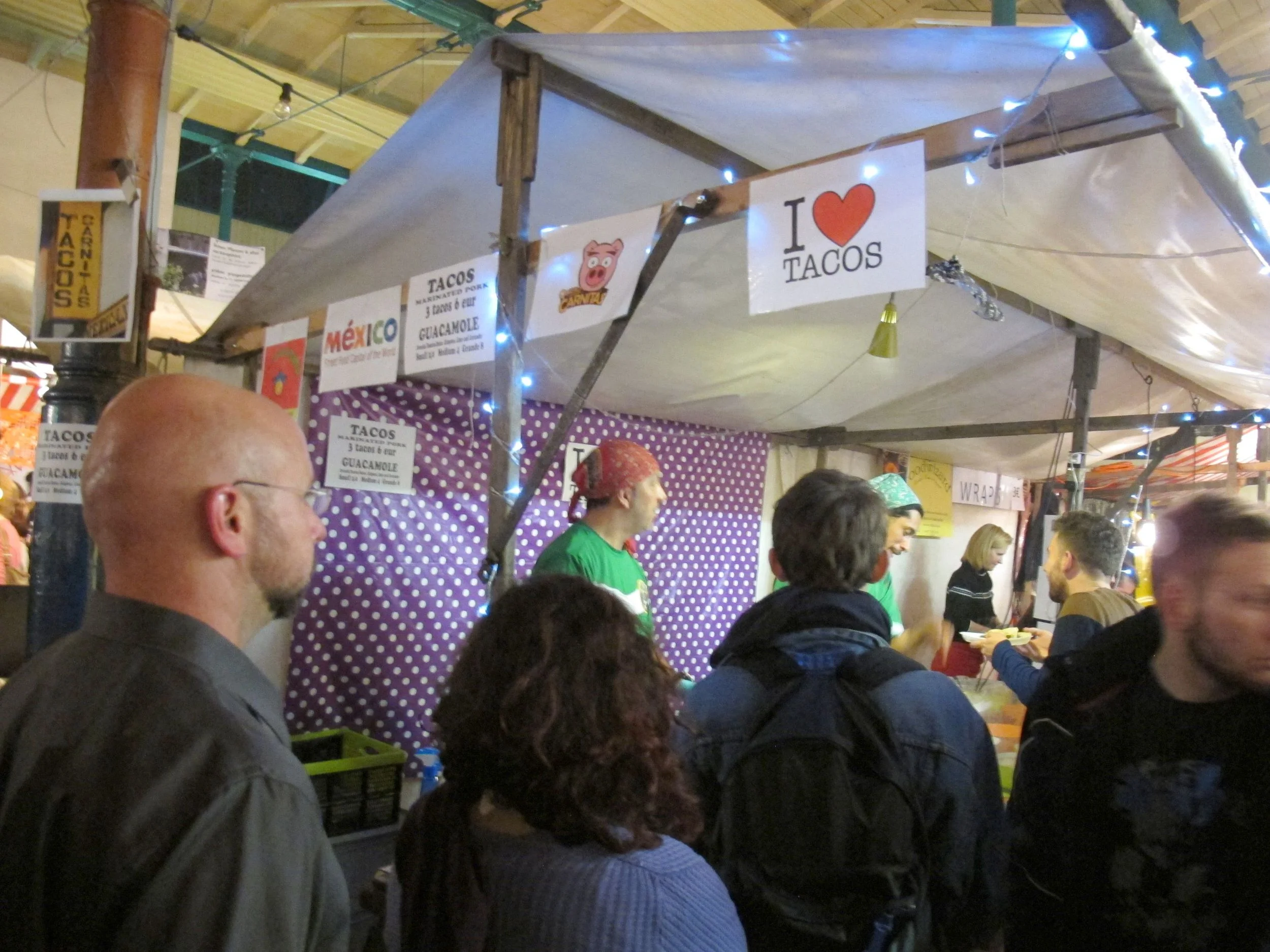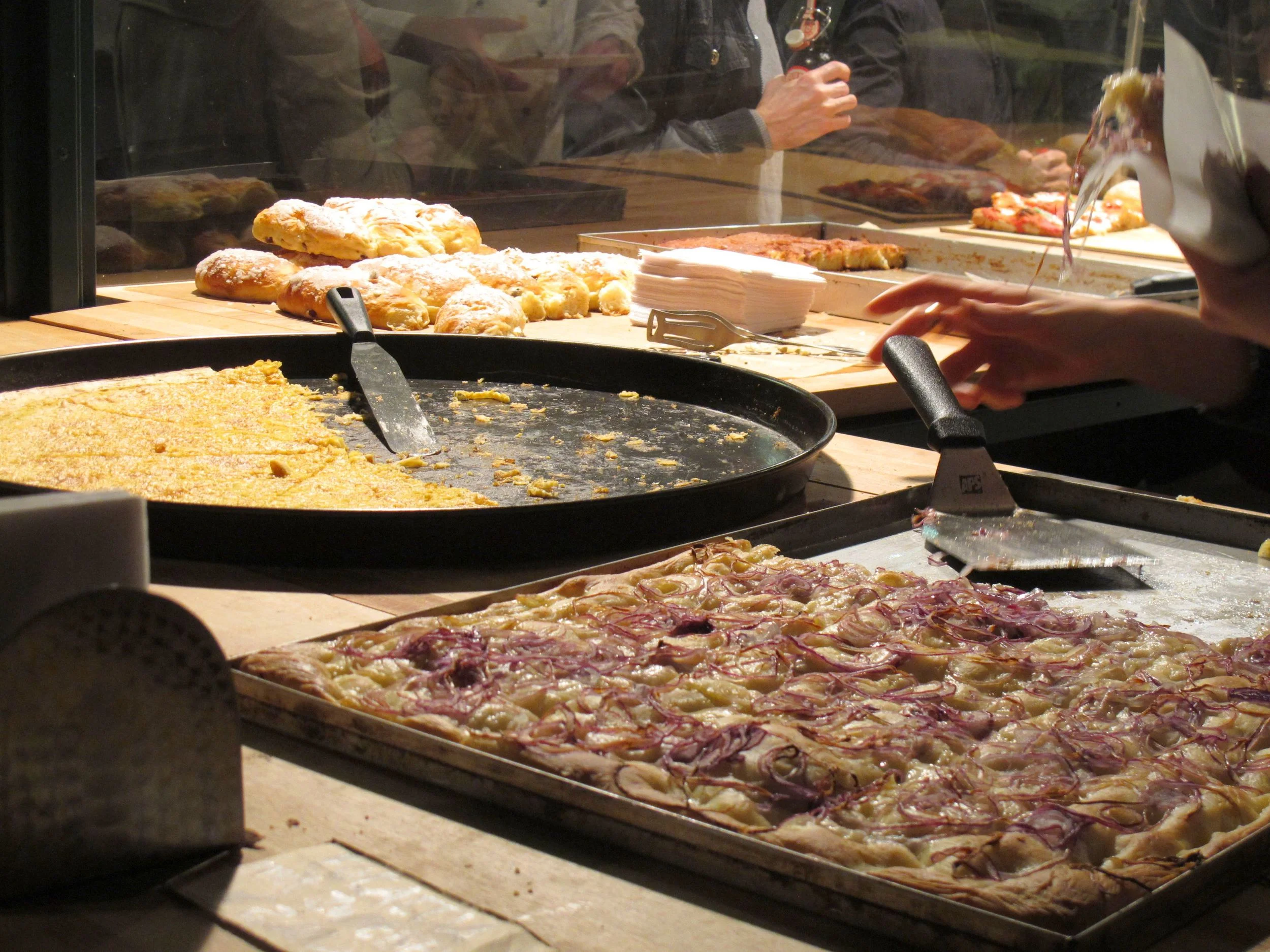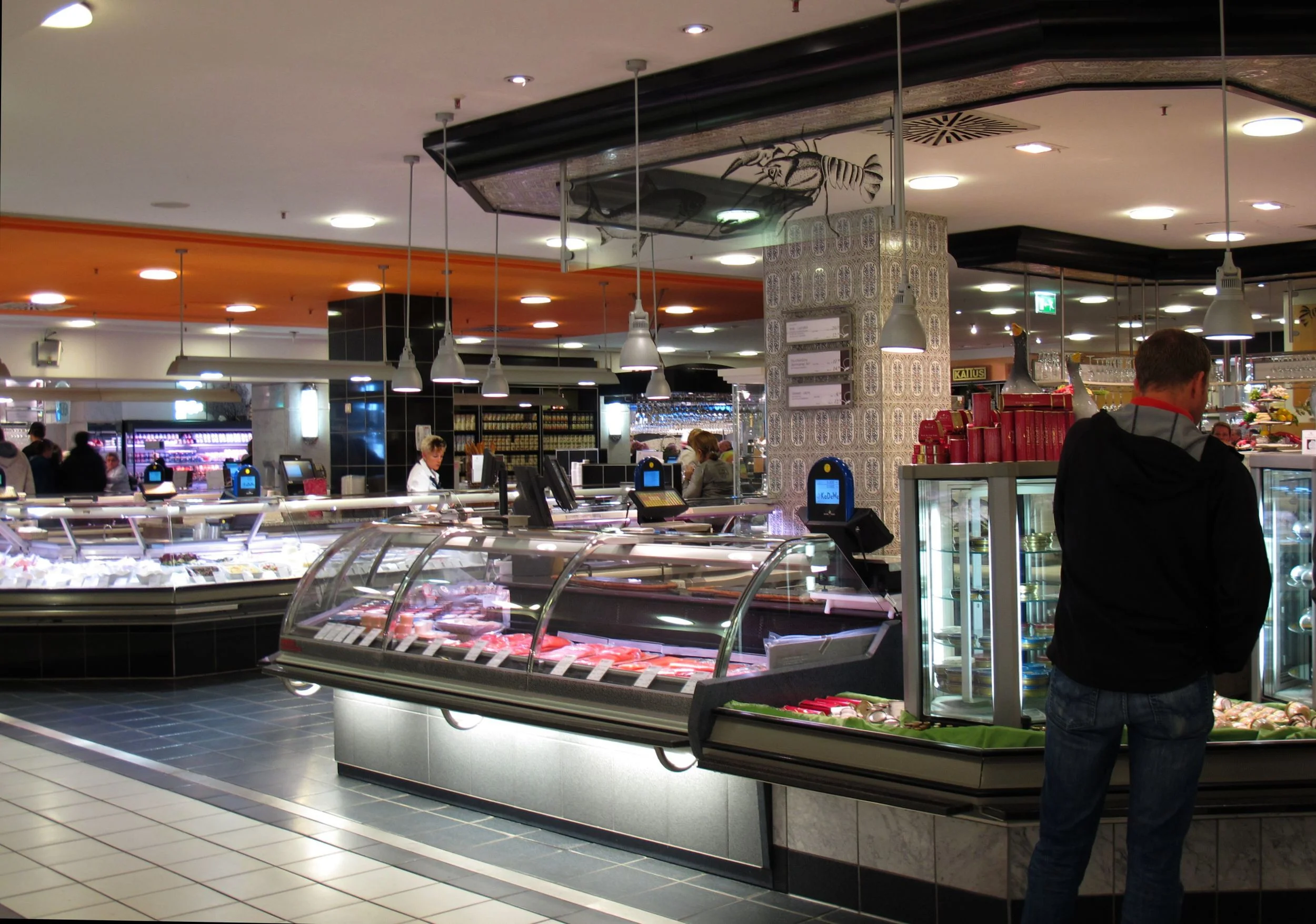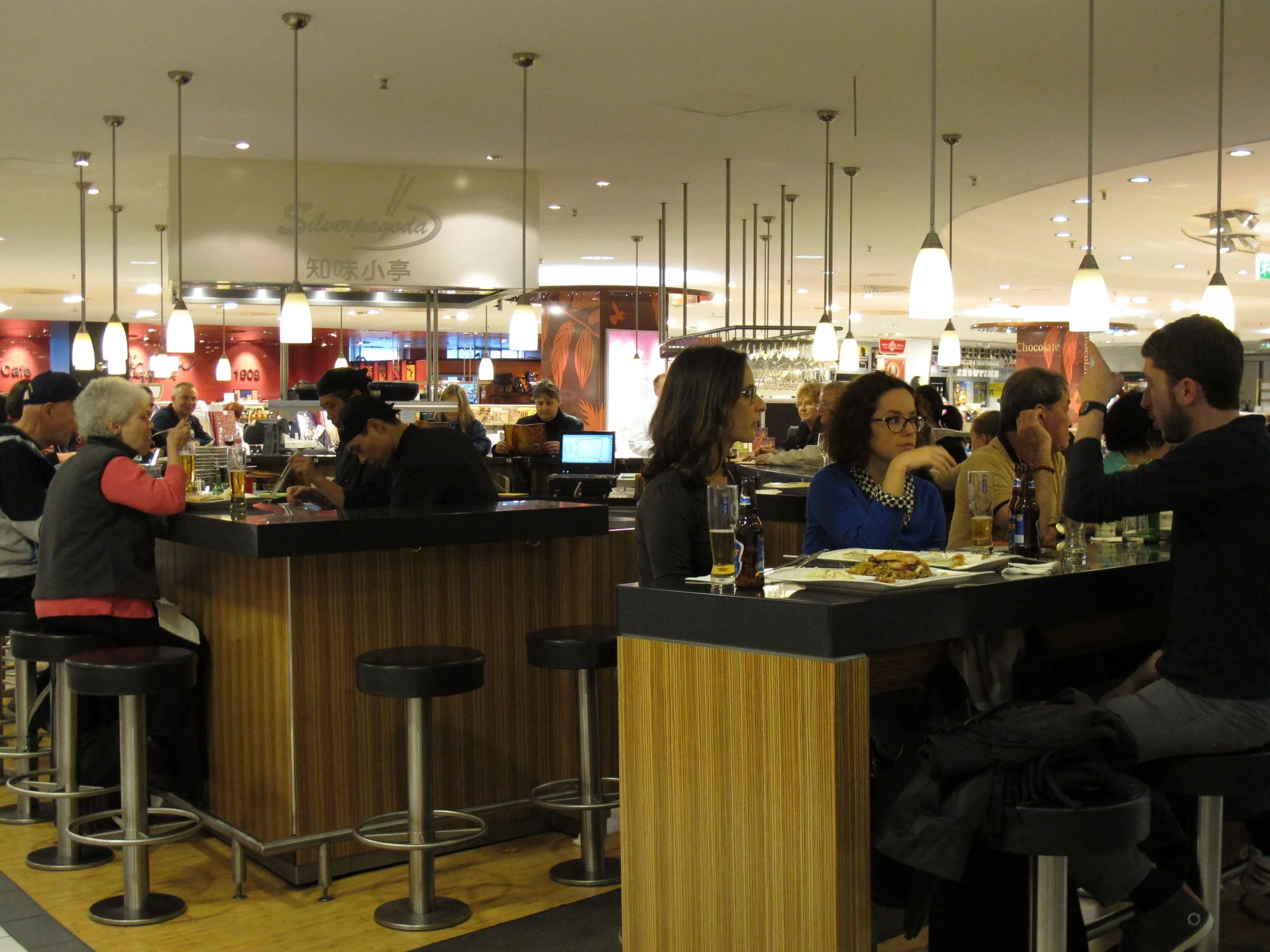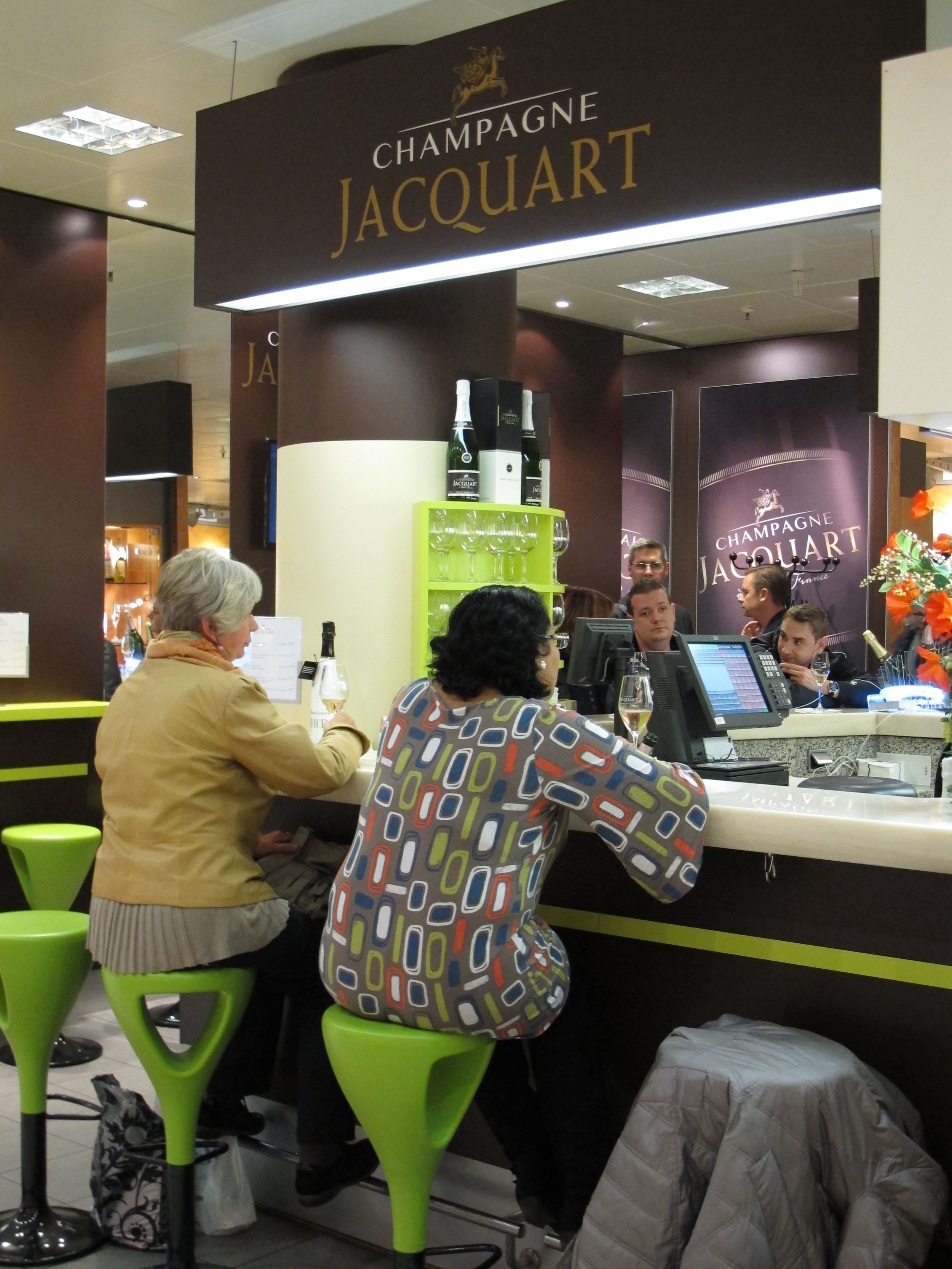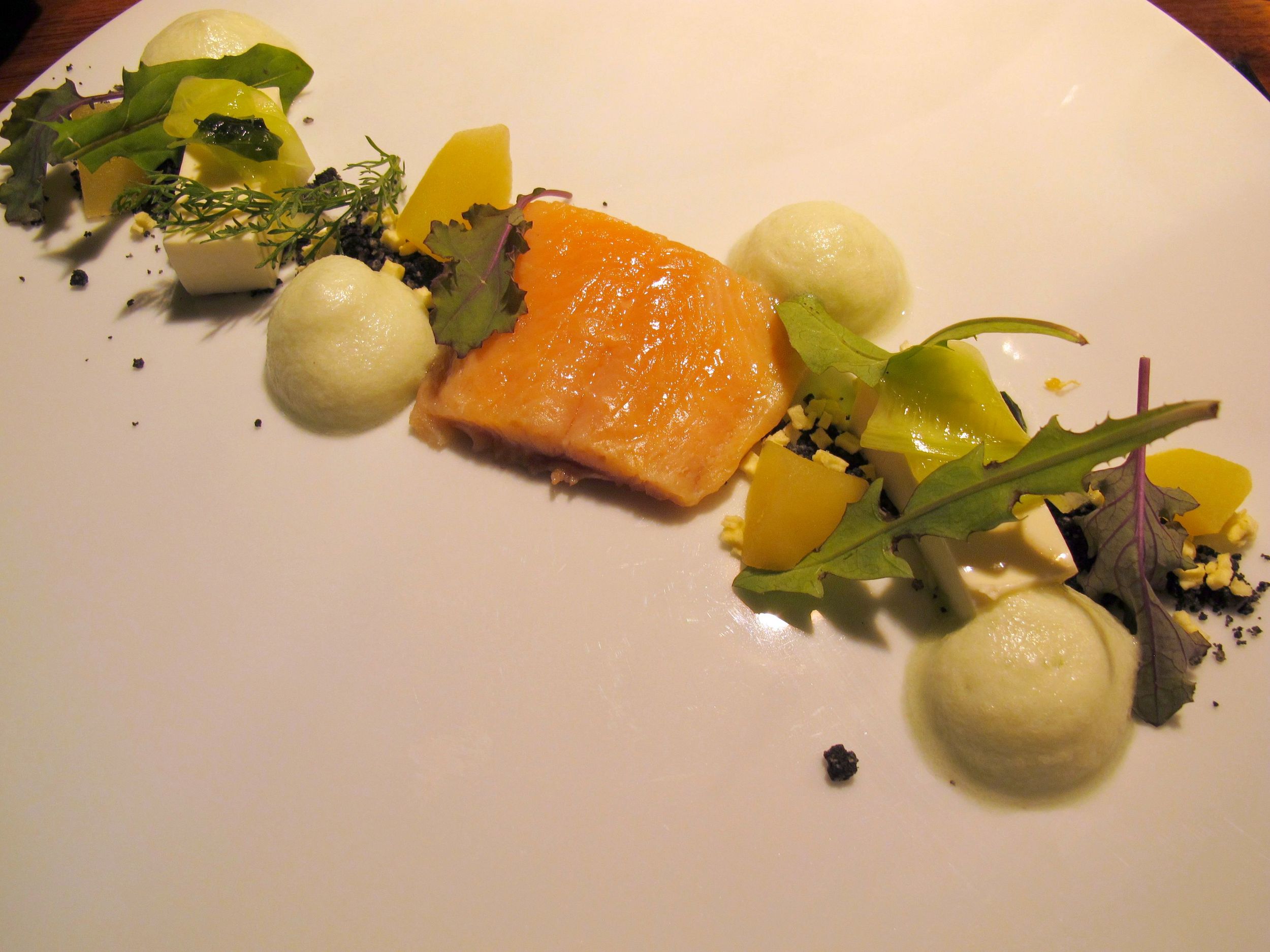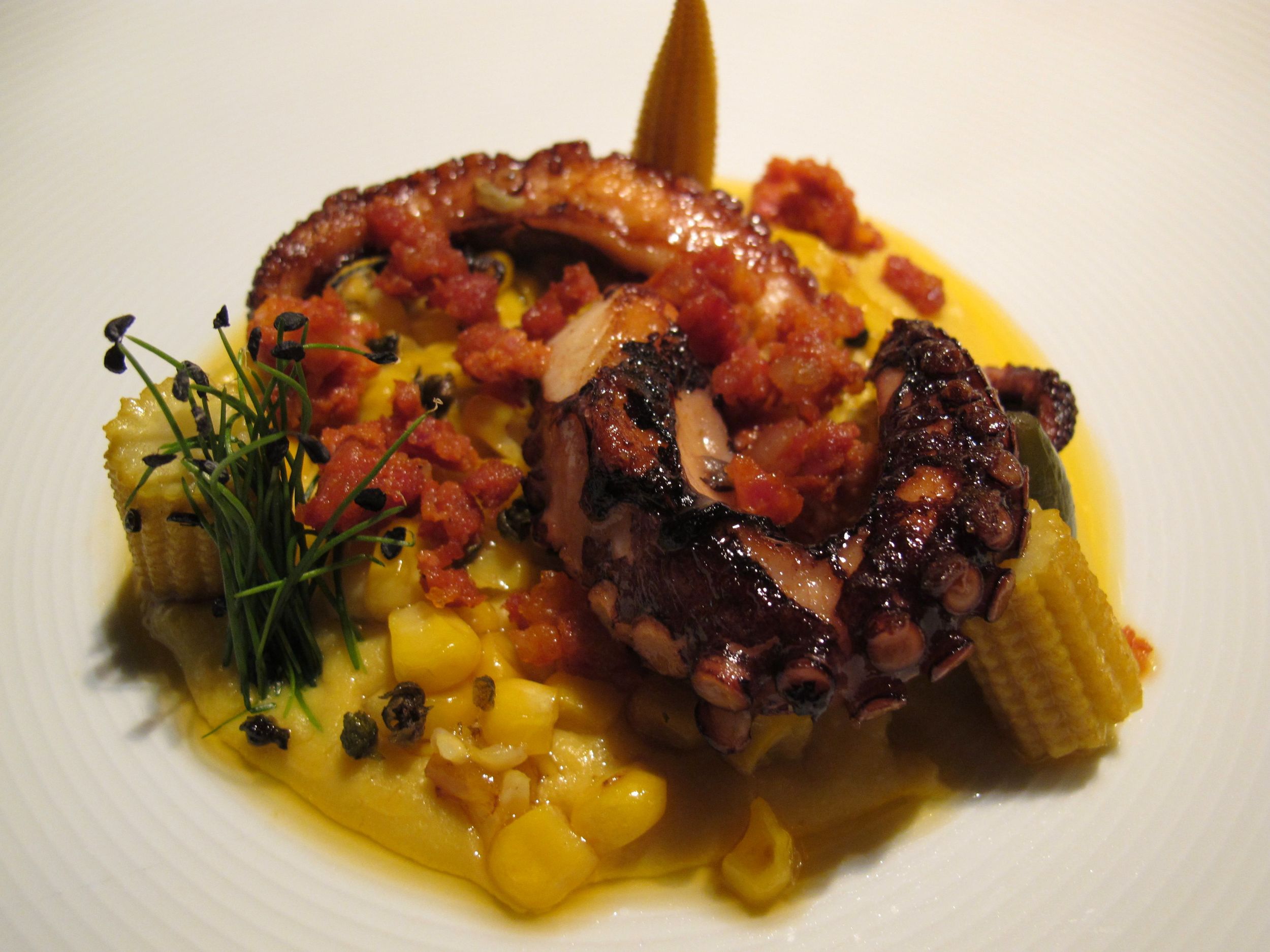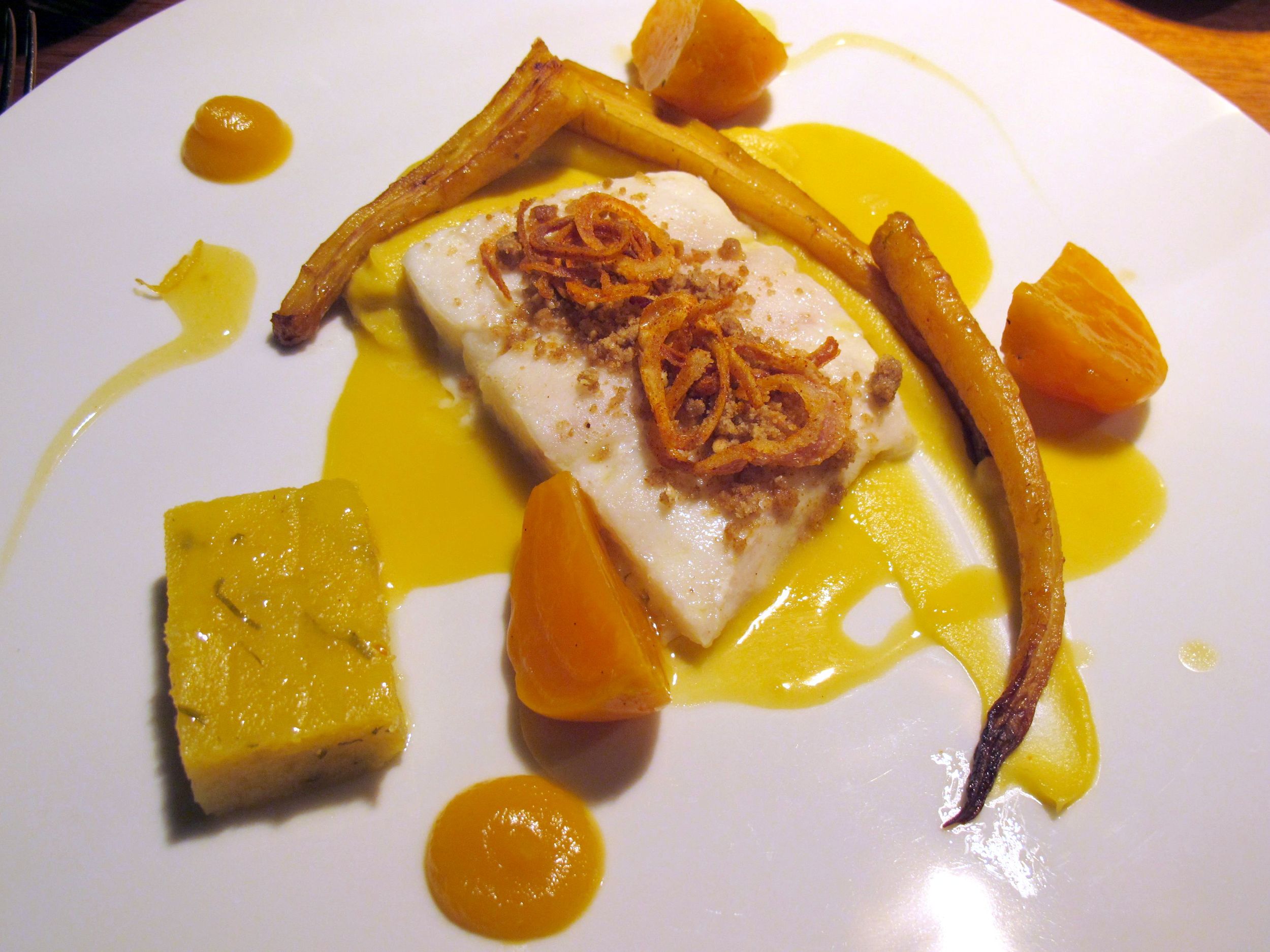Berlin Restaurants
/When I think of German food, I think of schnitzel, sausages, and entire sides of animals on a plate under a pound of heavy potatoes. Yes, they still have all of those, but like France, there are many chefs now bucking the pork and potato system and branching out to more modern and inventive fare.
First, the standards. In Berlin, you will find pretzels, or brezels, but they're not as prevalent as they are in Southern Germany.
This was actually the only brezel on the street I saw, and I did see another in a bakery, but they were pint sized compared to the one's I had seen in Munich during Oktoberfest last year. In the South, the brezel is often served as pub fare, or breakfast in Bavaria where you'll even find kids taking them to school to have as a snack with meat and cheese.
Schnitzel is on a lot of menus and you can get it with different meats - veal, pork, turkey and chicken, but the preparation is usually the same. You pound the meat thin, coat it in flour, egg, and bread crumbs, then fry that bad boy until it's a large, flat, McNugget.
I went with the original Wiener Schnitzel with veal and that's exactly what I got. A big piece of fried meat with an enormous lemon half. There wasn't room for anything else on the plate.
In case it wasn't enough breading, they started me with a basket of bread and a mysterious white sauce that could only be described to me as "Philadelphia." I like cream cheese, but this was lighter, whipped and served with herbs. Quite nice.
While I debated putting some of the herbed mix on my schnitzel, my server kindly told me that some Germans like to eat their schnitzel with some sweetness like cranberries, and asked if I'd like some. Bien sur! It really brightened the dish. I was a big fan.
And don't think there wasn't a side because you have to eat warm potato salad with your breaded meat and side of bread. It was actually quite good with mustard and hint of vinegar.
Then of course there's the wursts. You can in fact find sausages on nearly every corner and in many restaurants. Currywurst is the big street food in Berlin that you can get on the go most places.
They take a bratwurst, boil it, and then serve it with a ketchup, curry, paprika sauce, with a side of bread naturally. I found one that took it a step further and put some shoestring fries on top, which I like to think was the piece de carb resistance.
Another big Berlin street food staple is the Doner Kebab. Berlin is home to the largest Turkish population in Western Europe, so you can also find Turkish cuisine in many parts of the city, but one of the biggest mainstays is the grab and go doner.
The meat can be lamb, chicken, pork or a mixture. It's carved off the spit, placed in a warm pita like bread, and then piled high with lettuce, tomatoes, cucumbers, feta, herbs and a creamy garlic sauce. It's one of those sandwiches you need to hold onto, and never put down until you finish to keep it all intact. It's satisfying on all levels, and probably even more so after several drinks walking home from the bar.
Getting off the road to eat, but not far, I joined a friend at a fairly new event going on in Berlin called Street Food Thursday. Food trucks, pop up chefs and the like take over an indoor market at Markthalle Neun, and the locals come for a fun night out. It's standing room only for the hipsters wanting to sample some new street fare or grab a drink before heading on for the evening.
There was a culture clash of cuisines from tacos to pierogis to smoked meat, cronuts, yes cronuts, and a dash of German delicacies, which I had to jump in for.
I grabbed the line behind an airstream trailer boasting kasspatzle with homemade pasta and 3 different kinds of cheese, all coming from their local, family dairy farm. Then for a little contrast in taste and texture, it's topped with fried onions, black pepper and chives. Spatzle can either drown you for the night with its heavy cream and cheese, or if can revive you like this one with just a gentle touch of flavor and heft.
And when in Rome, or Berlin, you have to have some fabulously dry Riesling. No, they're not all sweet and they can be really good, like this one, and very inexpensive, as many things are in Berlin, at just 3.50 euro for a glass.
And when it's not Thursday night, but you can't decide what to eat, you should hit KaDeWa. KaDeWe is actually a department store, but like Harrod's in London, it has an entire floor dedicated to the best of gourmet food. You can get any of your favorite German or international delicacies here.
You can stay and drink champagne, eat with friends or take your food to go. Brilliant.
My final meal, I went for the full-on German-International tasting menu at the happening restaurant, Volt Berlin.
The chef was from Berlin and had opened this buzzy hot spot three years ago in the hip Kreuzberg area. He took a former 1920's electricity station and played off the lights and steel cages, turning into a stunning dining room.
He offers three menus - one focusing on meat, one on fish, and the last for the vegetarian, which again, shows the changing ways of the pork laden country.
The food was all stunning precise, well plated and with unique flavor combinations.
I love to see the range of food coming out of Berlin. It reflect the people, culture and diversity of the city, and it's great to see that evolving. Hopefully I'll return another day to see the next iteration.
